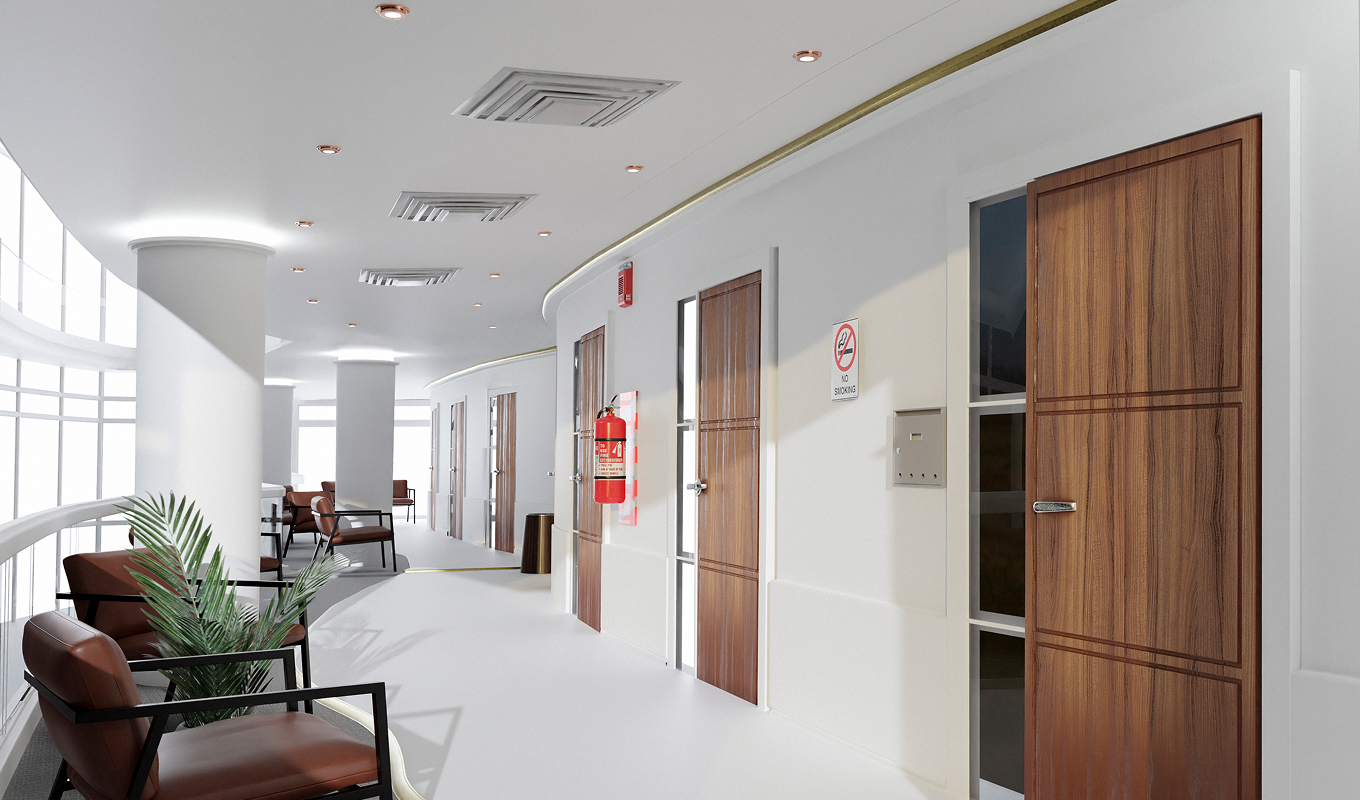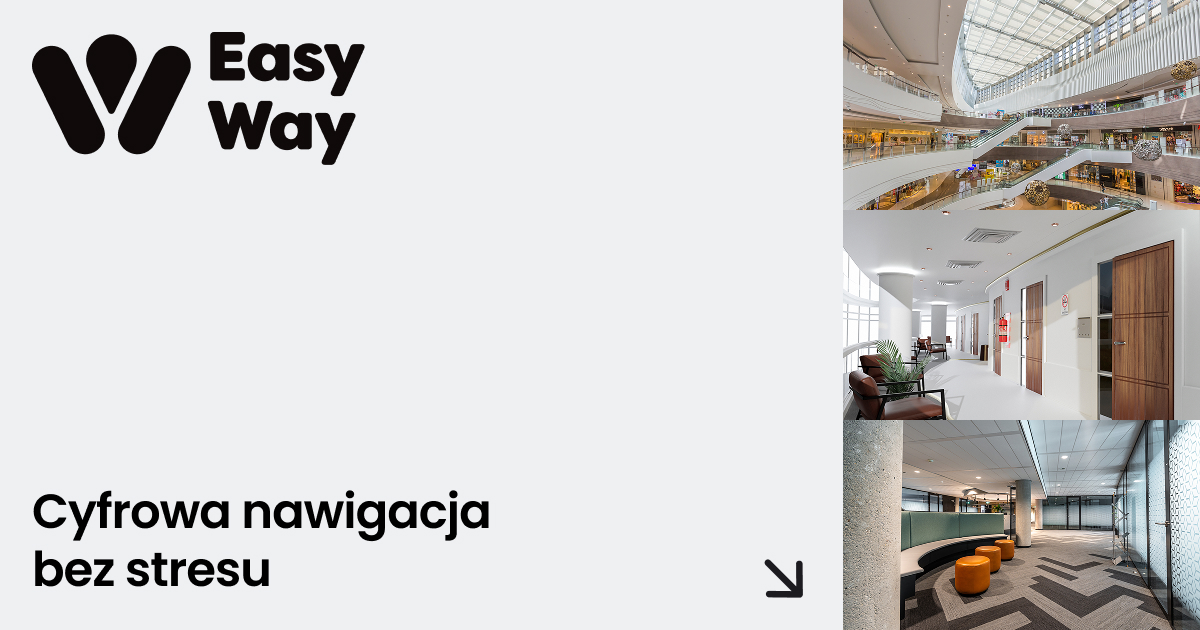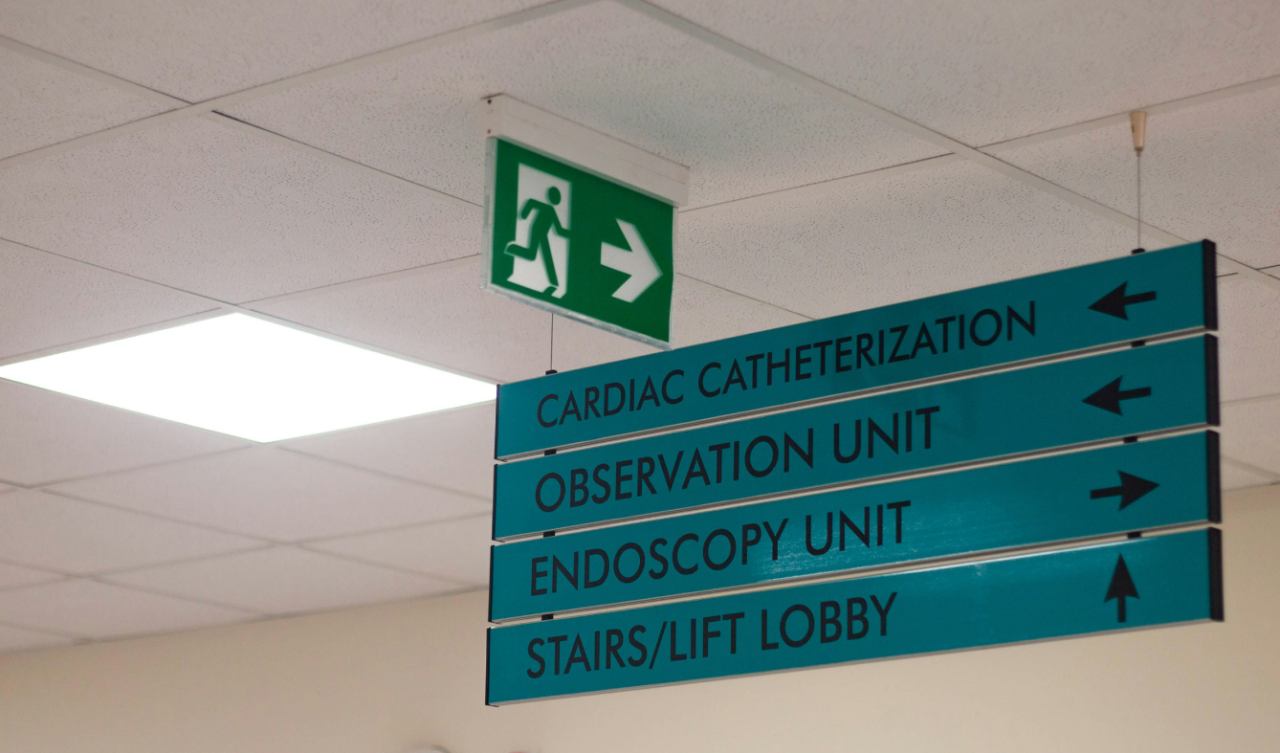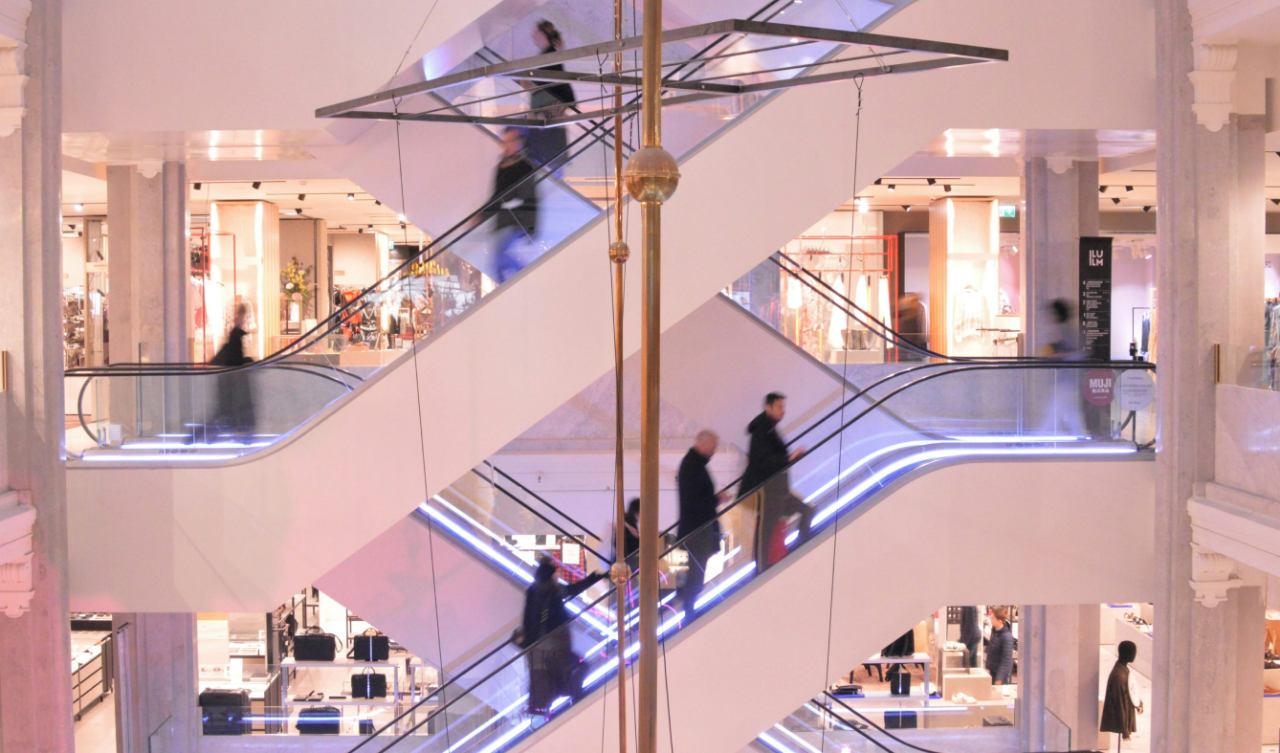Wayfinding is nothing more than the art of guiding people through complex spaces in an intuitive way. Find out what possibilities well-designed wayfinding offers.
introduction
What is WayFinding and why is it so important?

Author:
Tomasz Budzyński
Publication:
Reading time:
approx. 7 minutes

What is wayfinding?
Imagine entering a huge hospital or shopping centre for the first time. You don't know where to go, and you have very little time. You feel the stress starting to build. Instead of wandering aimlessly around the building, you can use wayfinding elements.
Wayfinding can be signs, directions, or posters. These are all the elements that help a user find their way in a building. They are meant to help:
- Determine where I am currently located.
- Plot a route to the destination.
- Recognise when I have reached the destination.
- Safely return to the starting point.
This term was introduced by architect Kevin Lynch in 1960, and since then, the concept has evolved from simple signage to advanced digital systems.
Traditional wayfinding
Traditional wayfinding refers to signage in the form of boards, arrows, or pictograms. There are many methods, and all sorts of tangible tools are intended to help the user answer the key question: "if I want to reach the destination, should I go left?".
Although this type of approach might seem less innovative, traditional systems are indispensable. This should always be the first level of orientation in a space.
Modern wayfinding for the 21st century
Digital wayfinding is the answer to the growing expectations of users accustomed to GPS navigation and mobile applications. We have all been in a situation where we wanted to go to city X. If we don't know the way, the first reflex usually leads us to Google Maps or another GPS navigation. These solutions instantly solve the problem and correspond perfectly with users' needs.
One of the goals of the EasyWay system is to achieve a similar effect, but within a building and without GPS technology. When a user doesn't know how to get to a specific hospital ward, they should:
- Open the application.
- Plot the route.
- Reach the destination.
The biggest advantage of digital wayfinding is the ability to adapt information in real time. For example, the layout of a building might change. Thanks to the CMS panel, EasyWay allows for independent data updates.
Why is wayfinding crucial for your space?
A well-designed wayfinding system is not just a convenience for users. Solving the problem of finding the way brings many other benefits to building administrators.
Shopping centres
Increasing conversion and sales is the most tangible benefit. Research (Au-Yeung et al., 2024) shows that stimuli in the shopping environment (including elements related to navigation) can influence consumers' emotional responses. This means that intuitive navigation can translate into a greater tendency for impulse purchases.
Office buildings
Effective wayfinding means real savings in operational costs. Reducing the number of inquiries about directions addressed to reception or security translates into increased team productivity and the prestige of the building, which utilises new technologies.
Hospitals
Medical facilities can consist of several, sometimes a dozen or more buildings. Reaching a specific ward can take a very long time. Besides patients feeling lost, medical staff also suffer losses. Hospital employees are constantly stopped and asked for directions. Implementing wayfinding allows such questions to be delegated to an interactive kiosk or mobile application. Efficient patient flow allows more people to be served, which directly affects the economic efficiency of the facility.
Improving user experiences
Wayfinding is not only a business tool but, above all, a way to build positive user experiences. Disorientation in an unfamiliar space causes anxiety, which negatively affects the entire experience with the facility. The emotions that accompany this spill over onto the relationship with the brand (whether it's a shopping centre or a hospital). An intuitive wayfinding system eliminates this source of stress, allowing users to focus on the purpose of their visit.
Summary
Wayfinding is a key element helping users navigate your building without stress and frustration. In an ideal world, traditional signage should be combined with modern digital solutions. Therefore, remember that implementing wayfinding brings benefits to both users and building administrators.
The EasyWay tool represents new technology that effectively solves spatial orientation problems. Find out how easily you can implement this application in your building.
Arrange a free consultation!
Check our knowledge base!
Our goal is to promote awareness regarding high-quality wayfinding! Stay up-to-date with our publications.

We conducted research on digital wayfinding in Poland (2025)
EasyWay to cyfrowy system Wayfindingu, który pomaga pacjentom, klientom i gościom sprawnie poruszać się po szpitalach, biurowcach i galeriach handlowych. Kiosk + aplikacja mobilna.…

How does digital wayfinding relieve medical staff?
What are the most common questions medical staff answer? "Excuse me, where can I find the laboratory?", "How do I get to room 305?", "Where do registrations take place?" Modern…

Multilingual wayfinding, or how to attract tourists and foreign clients?
Find out how multilingual wayfinding eliminates language barriers and increases conversion among foreign clients in your shopping centre. Proven EasyWay solutions.
Do you represent another industry but need a navigation system?
Write to us! We will gladly explain how EasyWay can help visitors navigate your facility efficiently.
Book a meeting